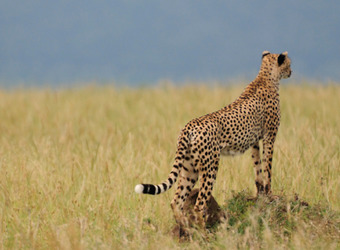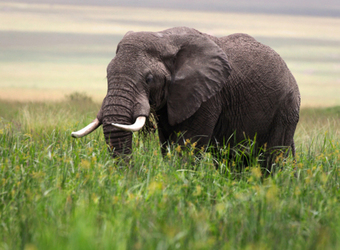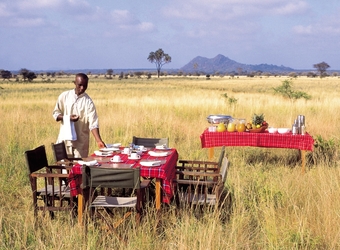Meru Nat'l Park
| Read Reviews | Write a Review Start Planning Your Custom Safari
 view larger image
view larger image
The wild and verdant savanna of Meru National Park gained global renown in the writings of naturalist Joy Adamson, who lived here with her husband, George, and Elsa the lioness of Born Free fame. The park is crossed by three major rivers and numerous mountain-fed streams, creating lush habitat for zebra, elephant, cheetah, leopard, reticulated giraffe, eland, waterbuck, hippopotamus, hartebeest, buffalo and more than 300 recorded species of birds. Snow-capped Mount Kenya stands sentinel over all.
 view image gallery
view image gallery
The Safari Experience
The exclusivity of Meru National Park is due to the lack of camps within it. While it used to be a very popular park in the 70s, today it is reserved for those travelers seeking to get off the beaten path and enjoy quietude with uncompromised and abundant wildlife viewing. Enjoy solitude in nature on open, 4x4 wildlife drives over semi-arid grassland and tracing the 13 permanent rivers and springs that bisect the park. There is the added bonus of doing guided bush walks, line fishing on one of the main rivers, night wildlife drives, and elegant meals in the wild of the bush. The views are spectacular, whether from Mughwango Hill, where the flagship camp aptly named Elsa’s Kopje is located, or looking out toward spectacular Mount Kenya. Riverine habitats play host to doum and raphia palms, and the park is dotted with enormous baobab trees.
 view image gallery
view image gallery
Wildlife
The wildlife of Meru is unique within Kenya’s northern Somali-Maasai biome, often found drinking along one of the many permanent water sources. Oases dot the otherwise arid landscape and teem with birdlife and mammals. The park features endangered Grevy’s zebra with their distinguishingly thin stripes and white bellies, reticulated giraffe with its brown spots outlined by crisp white, gerenuk with their beautiful long necks and big ears, Somali ostrich with their blue legs, Beisa oryx, as well as around 70 black and white rhino, which are breeding well in this recently extended sanctuary. The park does not want for large mammals and predators. There are lion, leopard, cheetah, elephant, hippo, and both lesser kudu and the more elusive greater kudu found here. The birds feature seemingly costume plumage with bright little kingfishers and bee-eaters. You may spot a Pel’s fishing owl with any luck, hunting nocturnally in river-side forests.
 view image gallery
view image gallery
How to Include Meru in Your Safari Itinerary
Recommended Number of Nights
Nature Travelers: 2 nights
Photographers: 2 nights
Families: 2-3 nights
Active Travelers: 2 nights
Other Regions to Include
Meru National Park’s broad diversity of species rivals many of the parks and reserves of northern Kenya. If you’d like to combine two regions in this area, Shaba National Reserve can be a strong complement for its similar level of exclusivity and privacy. Other areas of Laikipia and Lewa feature varied terrains – Lewa has rolling hills and Laikipia has rocky outcrops, all contrasting to Meru’s flat expanse. These areas also feature more diverse activities for those wanting a break from wildlife drives – horseback riding, camel treks, scenic flights and cultural encounters. The Maasai Mara offers a wholly different experience with classic African savanna, fabled, large herds of plains game, fierce predators and the enchanting Maasai people. To the southeast of Nairobi, Amboseli National Park features huge herds of elephant that migrate daily to the marshes to drink the cool waters running down from Mount Kilimanjaro. Extend your safari into the Serengeti to observe the migration of over a million wildebeest between December and March, and stop at the iconic Ngorongoro Crater to view the menagerie of wildlife traipsing around the crater floor.
